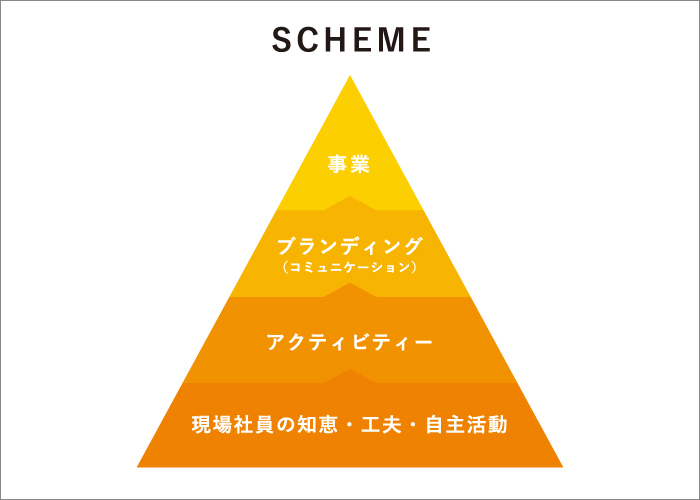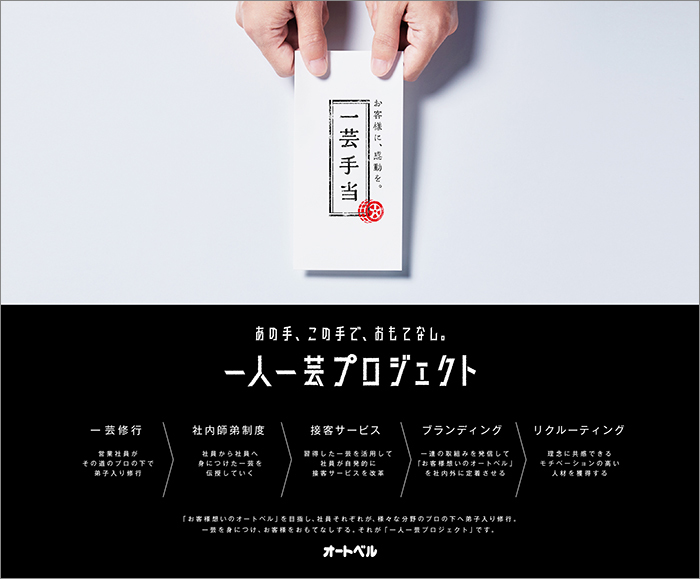In recent years, when meeting with top management, I have often heard concerns about people-related issues, such as work style reforms, labor shortages, and changes in the work attitudes of the millennial generation. Furthermore, with the simultaneous demands for business restructuring, innovation, and profit expansion, these concerns run deep. Even with various measures such as reviewing personnel systems and treatment, and strengthening training, it is said that these issues cannot be solved all at once, and the worries are endless.
Human and business challenges are two sides of the same coin
"Human issues and business issues should inherently be two sides of the same coin. For a company, people are its ultimate asset and the source of everything. So, can't we create mechanisms and systems to motivate people (employees) and maximize their abilities and wisdom? And can't we leverage that for branding and business?"
Listening repeatedly to the struggles many companies face led me to embrace this conviction. Around that time, I had the opportunity to work with young engineers at a company and learned they were conducting independent research alongside their regular work. What's more, they were thoroughly enjoying it. Their curiosity, passion, and sense of playfulness were extraordinary. I strongly resonated not only with the content of their activities but also with their mindset and attitude.
The answers lie within the company, specifically on the front lines.
These were the buried attempts of frontline employees at the cutting edge of the company. People outside the company naturally had no way of knowing about them, and they were scarcely known even within the company. Yet, I felt this was proof that the DNA of this company, founded on the craft of manufacturing, still lived on in the frontlines. That's when I had the idea: instead of letting these independent research activities end there, what if the company supported the challenge of aiming for productization and communicated this journey both inside and outside the company?
This could boost motivation not only for the individual but also for surrounding employees. Successful productization might spark innovation or contribute to the business. If those who received the message resonated with it, it could also benefit branding and recruitment. That was my reasoning.
Thus, for a year, I worked on a project spotlighting young engineers and sharing their work with the world. While the prototype was completed, it didn't reach full productization. However, it ended up encouraging many other engineers within the company engaged in similar independent research activities and garnered positive feedback from outside the company. The answer lay within the company itself, specifically within the field.
Company refers to the organization, but it also means "comrades."
Through this initiative, I arrived at this hypothesis:
"Uncover the latent value buried within the company's front lines. Create activities (systems, mechanisms, initiatives, spaces, etc.) that unleash the capabilities and wisdom of each individual employee. Furthermore, by communicating and expanding this value, build a framework that connects it to the company's originality."
We named this 'Company Design.' The word 'company' carries not only the meaning of a business entity but also that of 'colleagues.' As reflected in the hypothesis above, we infused this concept with the desire to design the company's colleagues (employees) and assist in 'transforming the company through the frontline capabilities of its employees.' Simultaneously, we reached out to creators and planners within Dentsu Inc., forming cross-organizational teams that are currently active.
Refining the scheme through continuous learning and practice
Our activities fall into two main areas. First, to test this hypothesis, team members are visiting top executives who are already implementing Company Design-like initiatives to learn their secrets. These reports will be published sequentially in the new series "The Secret to Why Some Companies Stay Vibrant," launching in late November on Web Dentsu News.
The second is engaging in concrete implementation. Here too, we have one publicly shareable case study: the "One Skill per Person Project" implemented by Auto Bell, a used car buying and sales company in Shizuoka Prefecture. This initiative, where the company fully supports employees in acquiring a "skill" applicable to customer service, was recognized for achieving multifaceted problem-solving and was selected for the 2019 Good Design Award.
For details on the One Skill per Person Project, click here.
"Company Design" is still a fledgling scheme. Building on the skills and experience we've cultivated in the advertising field, we aim to refine it through our team's learning and practical activities into a solution that simultaneously addresses both human resource and business challenges within companies. (Continued in #02)
If you're interested, please also visit the project site.






